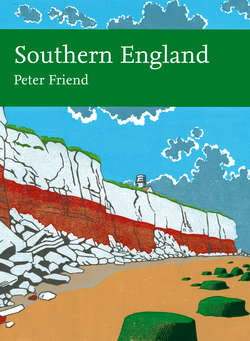Читать книгу Southern England - Peter Friend - Страница 28
Bedrock foundations and early history Sedimentation and surface movement before the mountain building
ОглавлениеThe Southwest Region consists predominantly of bedrock formed between about 415 and 300 million years ago, during Devonian and Carboniferous times. This bedrock records an episode during which some areas of the Earth’s crust rose while others sank, as part of a general buckling of the crust that is the first indication of compression and mountain building (Figs 36 and 37). As the rising areas became significantly elevated they were eroded, shedding sediment into the neighbouring sinking areas that became sedimentary basins. It is these basins that preserve most of the evidence of these events (Fig. 38).
In material that has been further and later deformed, it is difficult to work out the shape of the sinking areas, but many of them were probably elongated or trough-shaped, with the troughs separated by rising ridges that ran roughly east-west, parallel to the general trend of the later mountain belt. The troughs and ridges were caused in the early stages of mountain building by the compression and buckling of the crust. The troughs were generally flooded by the sea, or on the margins of relatively narrow seaways. Muds were the commonest materials to accumulate, although sands were also in plentiful supply. Lime-rich sediments, sometimes with corals and other shelly marine animals, were locally important. There were also periodic episodes of igneous activity that contributed volcanic lavas to the sedimentary successions.
FIG 35. The Southwest Region, showing Areas 1 to 3.
During these episodes of Devonian and Carboniferous basin and ridge activity, the Southwest Region was just one small part of a larger belt of similar activity that extended to the west into Ireland and Canada. Canada was then very much closer, because the Atlantic Ocean is a younger feature that only started to grow (at this latitude) about 100 million years ago, as divergence and spreading occurred along the mid-Atlantic plate boundary. To the south and east, the same belt of activity continued across northern France and into Germany. This broadly east-west trending belt later became the Variscan mountain belt.
